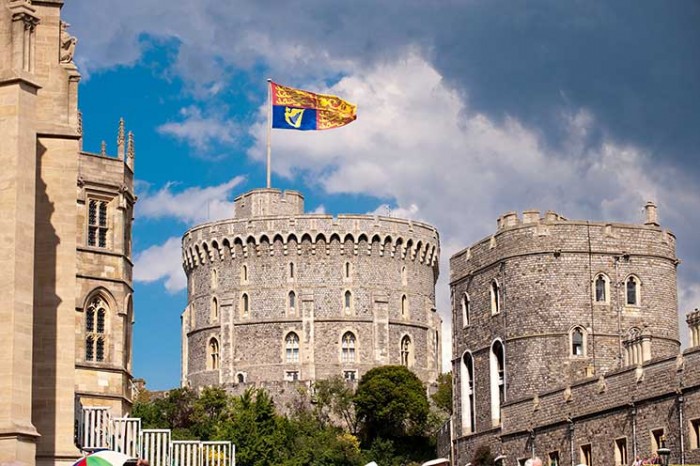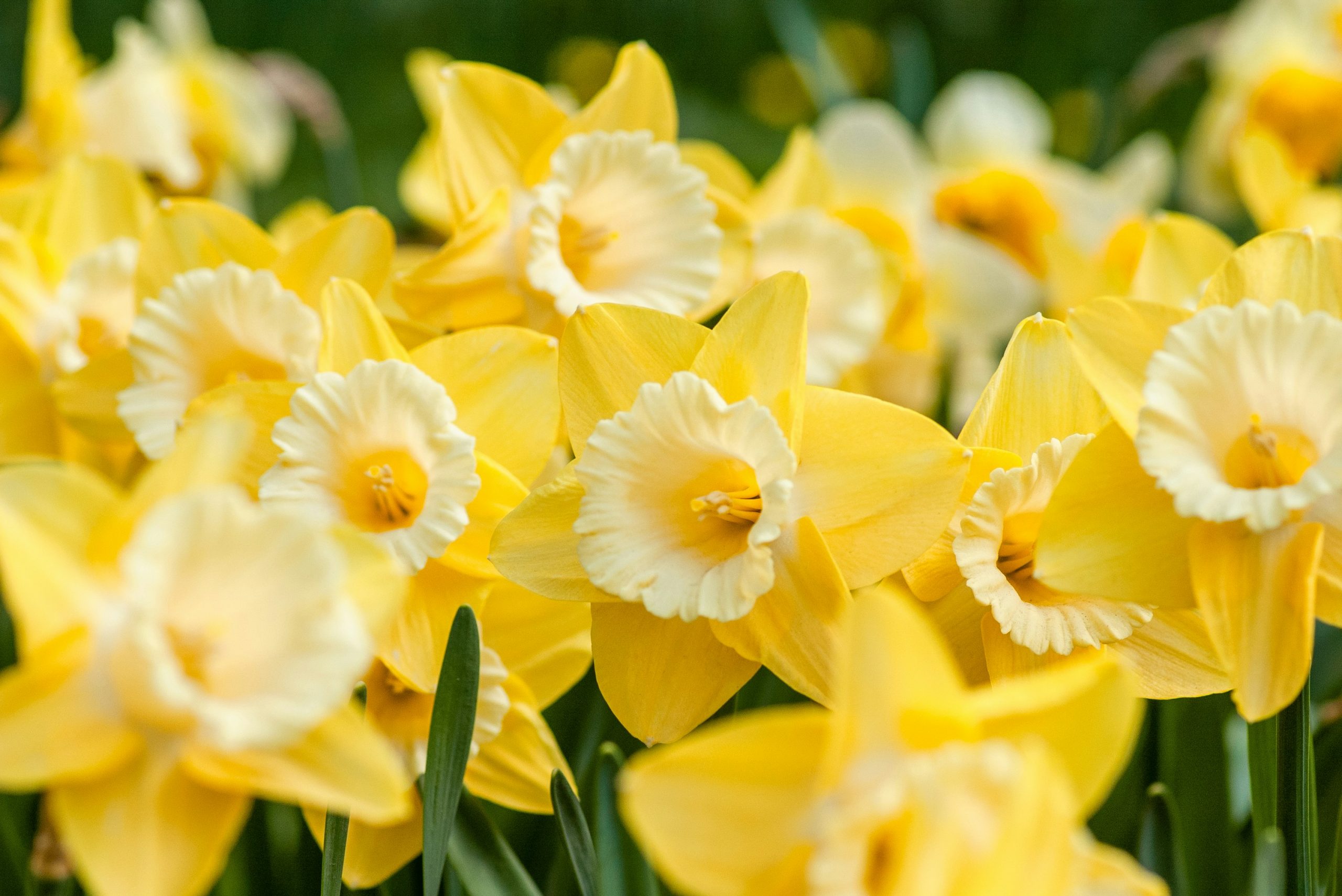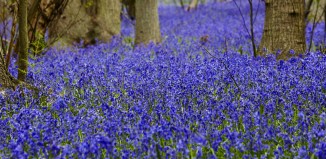Windsor Castle, a very royal residence
Alice Rush visits HM the Queen’s weekend home at Windsor Castle and treads in the footsteps of some of its most famous royal inhabitants
“The most Romantique castle that is in the world,” according to Samuel Pepys, Windsor Castle looks precisely as a fairytale fortress should, most notably for its famous Round Tower.
Standing a proud 40 metres above the town below, the central tower answers the question most commonly asked by visitors: is the Queen in? When the Royal Standard flies from the 15-metre flagpole, the answer is yes; when the Union Flag is up, the castle’s most famous resident is elsewhere.
Windsor is the oldest and largest occupied castle in the world. It has been the home of no less than 39 monarchs since its foundation by William the Conqueror at the end of the 11th century. Today, on entering the site, which is open to the public all year except on special occasions, one has the sense of a living, breathing place, closer to a fortified town than the residence of a single family – in fact, more than 160 people live within the precincts of the castle and over 200 people work there – more at Easter and in June when the court relocates to Windsor.
Occupying 10.5 hectares, or more than 268 tennis courts, the castle towers above the small town below. Its defensive position in the Thames valley, above the river, makes it clear why William the Conqueror chose the spot. At the time, Windsor was one in a ring of castles constructed by the conquering king around London. Built to secure the western approach to the capital, Windsor’s proximity to town and its rich hunting forest (of which Windsor Great Park is the surviving segment) later recommended it as a royal residence too: King Henry I had domestic quarters in the castle as early as 1110.
Norman beginnings
Typical of a Norman castle, Windsor features a motte – the artificial earth mound that supports the keep, the Round Tower – and, unusually, not one but two baileys, or fenced yards, known today as the Upper and Lower Wards. The latter is the most “public” of the precincts, where visitors can watch the Changing of the Guard or explore St George’s Chapel, while the Upper Ward is home to 951 rooms, including the State Apartments, which have been open to the public since the 1840s and are crammed with some of the Royal Collection’s finest treasures. The third of the three wards – what is known as the Middle Ward – is focused around the motte.
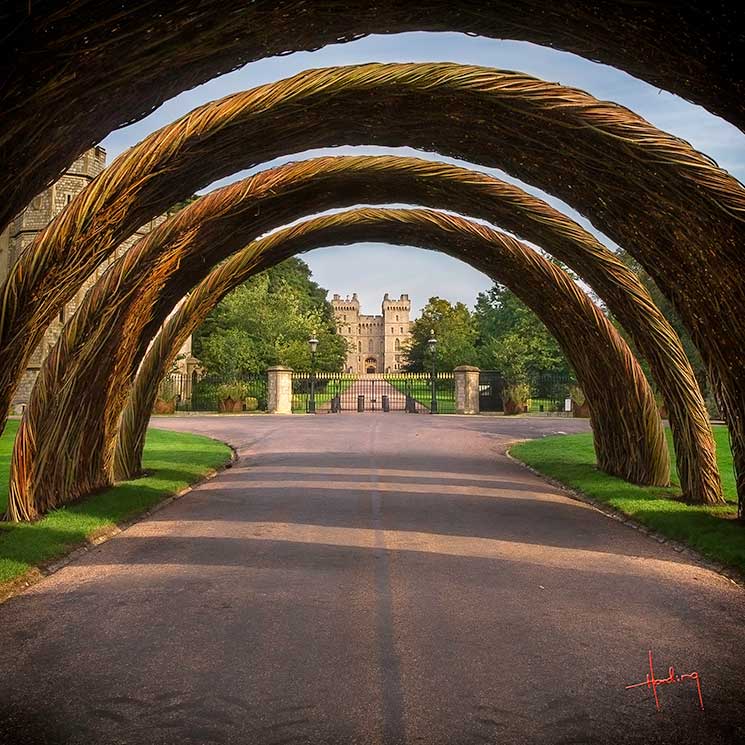
The original Norman castle was built out of wood, but in the late 12th century King Henry II began to replace the outer fortifications in stone. Nor was he the last, by a long shot, to make his mark. Windsor Castle bears traces of the many monarchs who have lived within its walls over the last 1,000 years – from Queen Mary’s Dolls’ House, designed with electricity and running water by architect Sir Edwin Lutyens, to King Henry VIII’s armour on display in the Lantern Lobby, on the site of the former private chapel where the catastrophic fire of 1992 began, there are treasures and stories in every corner.
One sovereign’s name comes up more than most, however: that of the warrior King Edward III, best known for his lengthy campaigns in France during the Hundred Years War. Edward spent £50,000 transforming Windsor from a military fortification to a Gothic palace. In 1348, he also founded, on his victorious return after the Battle of Crécy, what is now one of the oldest and most important orders of chivalry in the world – the Order of the Garter – comprising the sovereign, Prince of Wales and 24 Knights Companion.
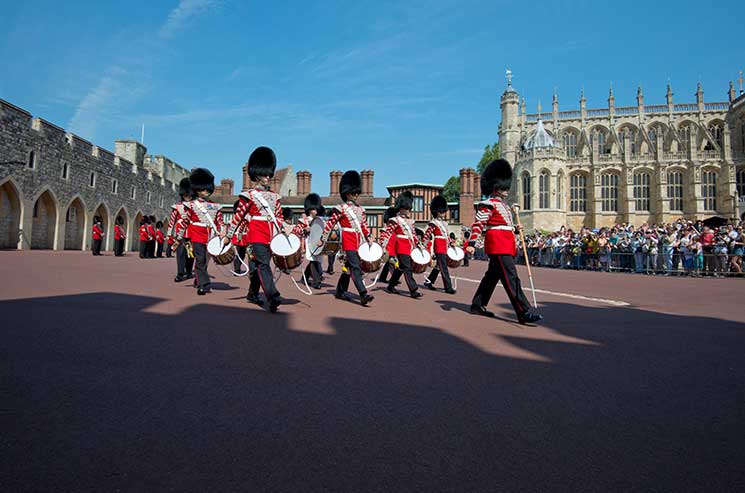
The cross of St George, the patron saint of the Order, with the garter around it can be spotted in many places throughout Windsor Castle – from the Jubilee Gardens, one of the castle’s more recent additions in 2002, to paintings in the Garter Throne Room, where the formal ceremony for creating new knights begins on Garter Day in June, or the ceiling of St George’s Chapel, the spiritual home of the Order of the Garter.
St George’s Chapel
Edward III’s great-grandson, King Edward IV, began work in 1475 on the current chapel, which was finished by Henry VIII. As they enter, schoolchildren are told to look out for “the biggest sword you’ll ever see” and the promise is fulfilled in the south, or “pilgrimage”, aisle of the chapel where Edward III’s sword, two metres in length, hangs next to a painting of the ageing king with the same long weapon encircled by two crowns, which are said to represent Scotland and France (at one time he held the kings of Scotland and France captive).
One of the finest examples of Gothic architecture in England, the chapel is famous for its magnificent stone fan vaulting and houses the tombs of ten sovereigns, including Henry VIII and his third and favourite wife, Jane Seymour, who died shortly after giving birth to the future Edward VI. King Charles I was laid to rest at the chapel too after spending his last and what one imagines must have been a singularly unhappy Christmas at the castle as a prisoner before his execution on 30 January 1649.
The Quire at St George’s Chapel is like nothing you will see elsewhere. In his creation of the Order of the Garter, Edward III was said to have been inspired by the legends of King Arthur and that influence can be seen in the banners of the current Knights of the Garter hanging above the Quire seats, with heraldic helms, or helmets, and half-drawn swords indicating that the knights are ready to defend their monarch. When a knight dies, the banner comes down but small brass stallplates record their presence – the earliest at Windsor goes back to 1390.
Yet, despite its pomp and pageantry, there are reminders that St George’s is not a museum piece, but a family chapel too: King George VI and the Queen Mother are interred in a memorial chapel off the north Quire aisle, 50 years separating the deaths of husband and wife.
Another sight that lingers in the memory is Matthew Wyatt’s poignant marble memorial to King George IV’s daughter, Princess Charlotte, who died giving birth to a stillborn child in 1817 at just 21.
In the State Apartments at Windsor there are also intriguing glimpses of the private people behind the famous portraits. In the Grand Vestibule, a room largely filled with weaponry, Queen Victoria’s favourite collie, Sharp, looks up adoringly at his mistress, for example, and there is a poignancy to Van Dyck’s lavish portrayals of Charles I, knowing, as we do, how that story ended.
A tale of two kings
The presence of two kings, in particular, is keenly felt in the State Apartments: King Charles II and George IV. For Charles II, Windsor was significant as the burial place of his father. The castle had been used by Oliver Cromwell as headquarters in the Civil War, as well as a prison for captured Royalist officers. The castle’s restoration, as well as that of the full ceremonial of the Garter, was symbolic of the Restoration of the monarchy itself.
Appointing, in 1673, the gentleman-architect Hugh May, with whom he had been in exile in Holland, Charles determined to rival the achievements of his cousin, Louis XIV, at Versailles in France. Windsor’s interiors were to be transformed into the grandest baroque State Apartments in England, with carvings by Grinling Gibbons and painted ceilings by Antonio Verrio glorifying the restored dynasty.
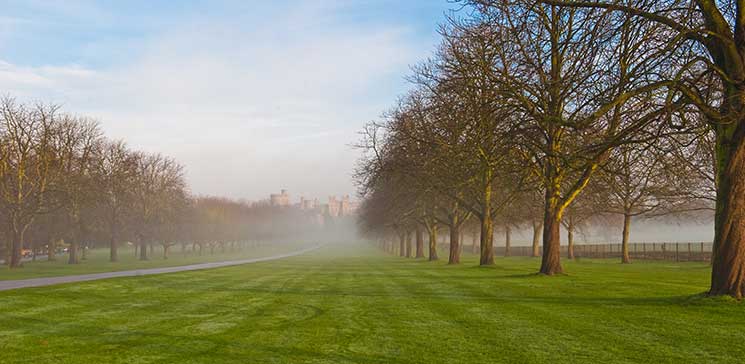
Charles II emulated his French cousin in other ways too, using his bedchamber for the formal ceremonies of levée and couchée – rising and going to bed attended by members of the court – rather than as his actual bedroom. The Long Walk, an avenue of elm trees stretching four kilometres south of the castle that was planted in 1680, also resembles the landscaping at Versailles.
Another king who liked things to look impressive was George IV, the monarch who transformed Buckingham House to the palace it is today.
The king and his artistic advisor, Sir Charles Long, determined that Windsor’s exterior should be as
“castle-like” as possible, heightened the Round Tower and added other towers and battlements.
With his architect Sir Jeffry Wyatville, George IV also gave the State Apartments on the north side a grand new entrance and staircase, with two huge new spaces: the colossal Waterloo Chamber, celebrating the defeat of Napoleon Bonaparte in 1815 and displaying Sir Thomas Lawrence’s lively portraits, and an extended St George’s Hall, where the Queen holds state banquets today.
George IV’s improvements might have cost him almost £300,000, but they resulted in “the most strikingly beautiful thing you can conceive”, according to a visiting Lady Dover.
Throughout the ages – and many memorable monarchs – Windsor Castle has never lost its power to dazzle.

